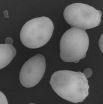(Press-News.org) A Spanish study has challenged the long-held belief that people in the Mediterranean all enjoy more healthy diets and lifestyles, after discovering alarmingly high cardiovascular risk factors similar to those found in the UK and USA.
Research published in the January issue of IJCP, the International Journal of Clinical Practice, also found strong links between low levels of education and increased risk.
"Cardiovascular diseases account for 33 per cent of deaths in Spain, making it the main cause of mortality in the country" says Dr Ricardo Gómez-Huelgas from the Internal Medicine Department at Hospital Carlos Haya, Malaga.
The study was carried out on a random selection of 2,270 adults attending a healthcare centre in Malaga, Andalucia, a region with one of the highest rates of cardiovascular disease in Spain. The participants ranged from 18 to 80, with an average of just under 44 years, 50.3 per cent were female and 58 per cent had low educational levels.
More than 60 per cent were overweight or obese and 77 per cent did not get enough exercise. The researchers also found that 28 per cent smoked, 33 per cent had high blood pressure, seven per cent had diabetes and 65 per cent had high cholesterol levels.
Just under 30 per cent of the patients had three or more cardiovascular risk factors that could be modified by changes to their lifestyle or diet.
"Most of the cardiovascular risk factors increased with age, with the exception of smoking and low levels of 'good' cholestererol, and we noted some differences between the sexes" says Dr Gómez-Huelgas.
"We also found that a low education level was associated with a high prevalence of cardiovascular risk factors and this association was significant when it came to smoking, obesity, abdominal obesity and high levels of fatty molecules.
"The prevalence of obesity, diabetes, high blood pressure and high cholesterol in Spain have all risen at an alarming rate over the last 20 years and this is likely to cause future increases in bad health and death due to cardiovascular disease."
Other key findings of the study include:
Men had a higher prevalence of smoking, high blood pressure, high levels of fatty molecules and impaired fasting glucose - which can lead to diabetes - than women.
Women were more likely to demonstrate a higher prevalence of physical inactivity and abdominal obesity. Young female smokers with sedentary lifestyles were a particular concern.
Obesity increased with age - 84 per cent of people over 50 were overweight or obese and 82 per cent had abdominal obesity, compared with 61 per cent and 56 per cent for the study as a whole.
"Our findings are cause for concern" says Dr Gómez-Huelgas. "We found high rates of obesity, abnormal lipid and fat levels and hypertension in the study group. And the high rates of smoking and sedentary lifestyles in young women raises fears for a large increase in cardiovascular deaths in this group in the near future. There are also issues around public health messages for people with lower education levels who tend to have higher risk factors.
"The drive to reduce cardiovascular disease by tackling these risk factors poses a real challenge for the healthcare profession. We hope that our findings can help to reduce risk factors among the most vulnerable sections of the community."
"The study by Dr Gómez-Huelgas and colleagues challenges the belief that cardiovascular disease, one of the fastest growing diseases in the developing world, is more likely to affect the chilly north than the sunny south" says Dr Anthony Wierzbicki, a London-based Consultant in Metabolic Medicine.
"In fact, the risk levels found in this study show parallels with the USA and are worse than those reported by recent UK studies.
"The myth that the Mediterranean diet and lifestyle is so healthy is based on 40-year old data from rural areas and so much has changed during those four decades. Studies like this are invaluable because they identify those people most at risk and provide valuable information that helps us to improve both screening and prevention strategies."
INFORMATION:
The paper and editorial can be viewed free online at: http://onlinelibrary.wiley.com/doi/10.1111/j.1742-1241.2010.02543.x/pdf
http://onlinelibrary.wiley.com/doi/10.1111/j.1742-1241.2010.02566.x/pdf
Note to editors:
Paper: Prevalence of cardiovascular risk factors in an urban adult population from southern Spain. IMAP study. IJCP, the International Journal of Clinical Practice. Gomez-Huelgas et al. 65.1, pp 35-40. (January 2011). DOI: 10.1111/j.1742-1241.2010.02543.x
Editorial: Cardiovascular screening: which populations, what measure of risk? Wierzbicki A. IJCP, the International Journal of Clinical Practice. 65.1, pp 3-5. (January 2011). DOI: 10.1111/j.1742-1241.2010.02566.x
IJCP, the International Journal of Clinical Practice was established in 1946 and is edited by Dr Graham Jackson. It provides its global audience of clinicians with high-calibre clinical papers, including original data from clinical investigations, evidence-based analysis and discussions on the latest clinical topics. The journal is published by Blackwell Publishing Ltd, part of the international Blackwell Publishing group. www.ijcp.org www.twitter.com/IJCPeditors
Wiley-Blackwell is the international scientific, technical, medical, and scholarly publishing business of John Wiley & Sons, with strengths in every major academic and professional field and partnerships with many of the world's leading societies. Wiley-Blackwell publishes nearly 1,500 peer-reviewed journals and 1,500+ new books annually in print and online, as well as databases, major reference works and laboratory protocols. For more information, please visit http://www.wileyblackwell.com/ or our new online platform, Wiley Online Library (http://www.wileyonlinelibrary.com/), one of the world's most extensive multidisciplinary collections of online resources, covering life, health, social and physical sciences, and humanities.
Spanish heart risk study challenges image of healthy Mediterranean diet and lifestyle
Risk factors were similar to those found in the US and UK
2011-01-11
ELSE PRESS RELEASES FROM THIS DATE:
Hubble zooms in on a space oddity
2011-01-11
A strange, glowing green cloud of gas that has mystified astronomers since its discovery in 2007 has been studied by Hubble. The cloud of gas is lit up by the bright light of a nearby quasar, and shows signs of ongoing star formation.
One of the strangest space objects ever seen is being scrutinised by the penetrating vision of the NASA/ESA Hubble Space Telescope. A mysterious, glowing green blob of gas is floating in space near a spiral galaxy. Hubble uncovered delicate filaments of gas and a pocket of young star clusters in the giant object, which is the size of the ...
New hope in fight against Huntington's disease
2011-01-11
Hope for new ways of treating devastating neurodegenerative disorders such as Huntington's disease has been raised by a trans-Atlantic team of researchers thanks to the use of cutting-edge genetic techniques.
Led by the University of Leicester, scientists from the University of Lisbon (led by Dr Tiago Outeiro) and University of California at San Francisco (led by Dr Paul Muchowski) collaborated to generate novel approaches for tackling the diseases. Their work, funded by the Medical Research Council, is published in The Journal of Biological Chemistry.
At Leicester, ...
New research shows how light can control electrical properties of graphene
2011-01-11
New research published today, shows how light can be used to control the electrical properties of graphene, paving the way for graphene-based optoelectronic devices and highly sensitive sensors.
This year's Nobel Prize for Physics was awarded for research into graphene, recognising its potential for many applications in modern life, from high-speed electronics to touchscreen technology. The UK's National Physical Laboratory, along with a team of international scientists, have further developed our understanding of graphene by showing that when this remarkable material ...
Researchers uncover behavioral process anticipating the results of rapid eye movements
2011-01-11
A team of researchers has demonstrated that the brain predicts consequences of our eye movements on what we see next. The findings, which appear in the journal Nature Neuroscience, have implications for understanding human attention and applications to robotics.
The study was conducted by researchers at University Paris Descartes, New York University's Department of Psychology, and Ludwig-Maximilian University in Munich.
Our eyes jump rapidly about three times each second to capture new visual information, and with each jump a new view of the world falls onto the retina—a ...
Federal peer review may be overstretched and error prone
2011-01-11
The federal peer review system, by which research proposals are judged worthy for funding, may be "over stretched" and "susceptible to error," said Elmer Yglesias, a researcher at the Science and Technology Policy Institute and author of "Improving Peer Review in the Federal Government," published in the current issue of TECHNOLOGY & INNOVATION, Proceedings of the National Academy of Inventors ™, (www.academyofinventors.org) now available on-line at: http://www.cognizantcommunication.com/filecabinet/Technology/techinnovation.html
According to Yglesias, the federal ...
Radiometer finds sources of fire
2011-01-11
The number and scale of forest fires has increased dramatically in recent decades. Who can forget last summer's television images of blazing infernos devouring miles and miles of forest in Russia, Australia and California? In Germany, too, several regions are under threat precipitated by climate change – Brandenburg, for example, is one of the areas of Europe that are most at risk.
Often, fires can only be contained from the air. In order to fight them in a targeted way, firefighting planes need to be given precise information on where the flames are at their worst. Infrared ...
No left turn: 'Superstreet' traffic design improves travel time, safety
2011-01-11
The so-called "superstreet" traffic design results in significantly faster travel times, and leads to a drastic reduction in automobile collisions and injuries, according to North Carolina State University researchers who have conducted the largest-ever study of superstreets and their impacts.
Superstreets are surface roads, not freeways. It is defined as a thoroughfare where the left-hand turns from side streets are re-routed, as is traffic from side streets that needs to cross the thoroughfare. In both instances, drivers are first required to make a right turn and ...
Researchers create 'scoring system' for PTEN mutation testing
2011-01-11
Monday, January 10, 2011 – Cleveland – Researchers have discovered a method for more precise identification of individuals who should undergo testing for genetic mutations of the tumor suppressor gene PTEN, which associates with a variety of conditions including several types of cancers. The research has created a diagnostic scoring system that improves on established criteria.
Led by Charis Eng, M.D., Ph.D., Chair of the Genomic Medicine Institute at the Lerner Research Institute of Cleveland Clinic, the study – the largest clinical study to date on the identification ...
Minerals provide better indoor air
2011-01-11
Since the 50s, formaldehyde has been the basic material for many artificial resins and glues used in particleboards and plywood boards. Estimates indicate that more than 85 percent of all wood materials have adhesives containing formaldehyde. This substance escapes from the materials and, along with other sources, pollutes indoor air. This is why numerous ways have been developed to reduce emissions, and the International Agency for Research on Cancer (IARC) of the World Health Organization WHO has even classified formaldehyde as carcinogenic for humans. Thereupon both ...
Social class and changes in mortality from liver cirrhosis over the 20th Century
2011-01-11
A paper describing a dramatic change during the 20th century in England and Wales in the association between social class and mortality from liver cirrhosis features in Alcohol and Alcoholism. While deaths from cirrhosis were more common among higher social classes in the early part of the century, the pattern changed so that deaths from cirrhosis were much more common among the lower social classes by the end of the century. Data on male cirrhosis mortality by social class were obtained from the Registrar General's Decennial Supplements for the years 1921�.
The ...
LAST 30 PRESS RELEASES:
Archaeologists use AI to create prehistoric video game
Mitochondria migrate toward the cell membrane in response to high glucose levels
Tiny viral switch offers hope against drug-resistant bacteria
Most parents aware of early peanut introduction guidelines, but confused about details
HPV vaccine can protect against severe lesions of the vulva and vagina
Virtual care provision and emergency department use among children and youth
Quadrivalent HPV vaccine and high-grade vulvovaginal lesions
Insights into dry eyes gained from stem cell-derived tear glands
Researchers identify 166 human pluripotent stem cell lines available for use in clinical applications
Europa Clipper instrument uniquely observed interstellar comet 3I/ATLAS
UN University Report challenges climate change as sole trigger of Syrian Civil War, exposing governance failures in drought response
Real estate investment trust (REIT) acquisition associated with hospital closure and bankruptcy
New Raman imaging system detects subtle tumor signals
Boston Children’s receives a $7.5 million grant from Aligning Research to Impact Autism (ARIA) to provide clinical research coordination for the IMPACT Network
Spray-on antibacterial coating offers new protection for plants against disease and drought
ESMT Berlin study: What makes a first offer successful in negotiations
Groundbreaking ceremony marks the beginning of CTAO-South Array construction in Chile
Why swearing makes you stronger
What prevents more cancer patients from enrolling in potentially life-saving clinical trials?
UK’s worst-case climate risks laid bare for lawmakers
A decline in churchgoing linked to more deaths of despair
TAMEST announces Maralice Conacci-Sorrell, Ph.D., UT Southwestern Medical Center, as 2026 Mary Beth Maddox Award & Lectureship Recipient
Global study to evaluate whether dengue outbreaks can be anticipated earlier
Chonnam National University researchers propose innovative voltage-loop control for power factor correction
Accelerating next-generation drug discovery with click-based construction of PROTACs
Detecting the hidden magnetism of altermagnets
$7M gift supports health research, engineering and athletics at UT San Antonio
NU-9 halts Alzheimer’s disease in animal model before symptoms begin
Hospitals acquired by real estate investment trusts associated with greater risk of bankruptcy, closure
City of Hope scientists study rare disorder to uncover mechanism and hormone regulation underlying fatty liver disease and sweet aversion
[Press-News.org] Spanish heart risk study challenges image of healthy Mediterranean diet and lifestyleRisk factors were similar to those found in the US and UK




